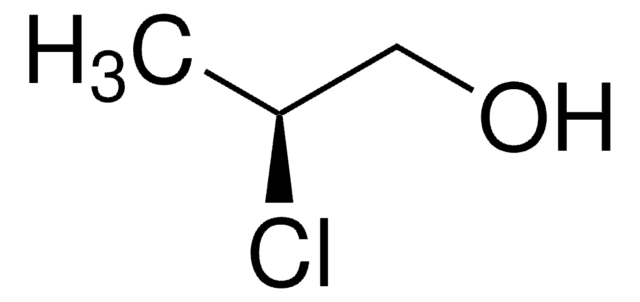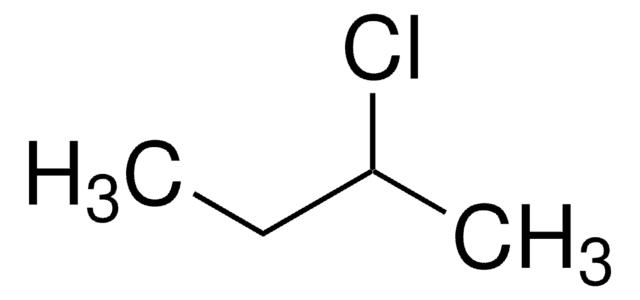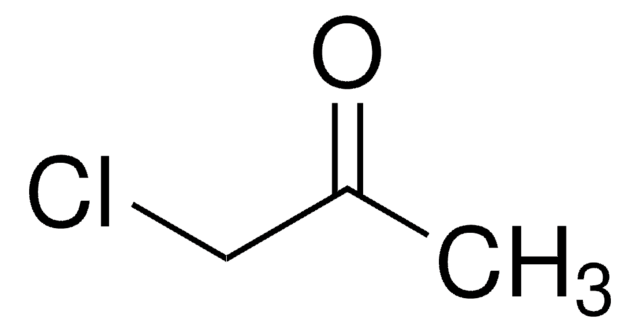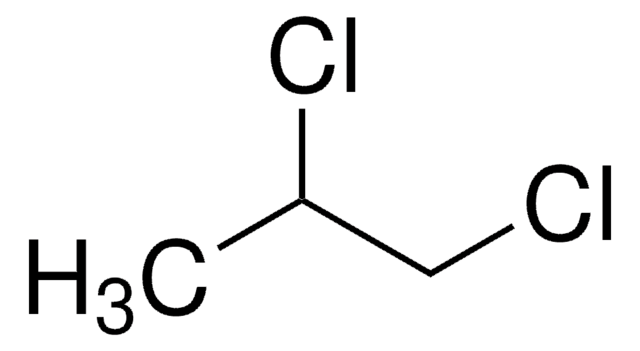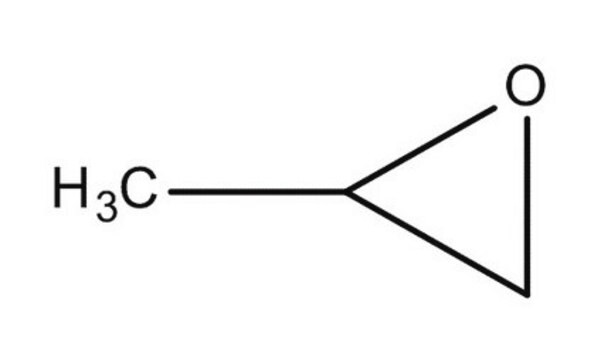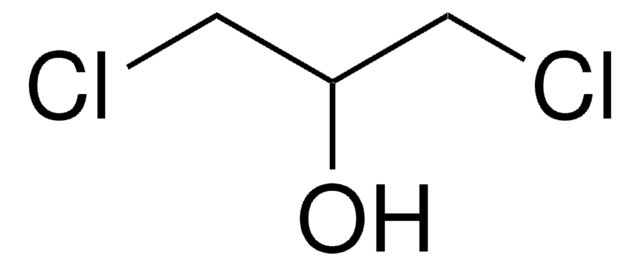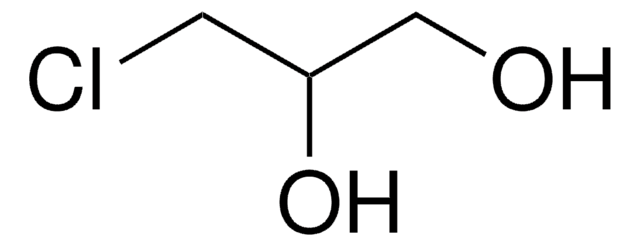292087
1-Chloro-2-propanol
70%
Synonyme(s) :
Chloropropanol, Propylene chlorohydrin
About This Item
Produits recommandés
Niveau de qualité
Pureté
70%
Impuretés
<25% 2-chloro-1-propanol
Indice de réfraction
n20/D 1.439 (lit.)
Point d'ébullition
126-127 °C (lit.)
Densité
1.111 g/mL at 25 °C (lit.)
Chaîne SMILES
CC(O)CCl
InChI
1S/C3H7ClO/c1-3(5)2-4/h3,5H,2H2,1H3
Clé InChI
YYTSGNJTASLUOY-UHFFFAOYSA-N
Vous recherchez des produits similaires ? Visite Guide de comparaison des produits
Catégories apparentées
Description générale
Application
- chemical intermediate for the manufacture of propylene oxide, a starting material for production of polyurethane polyols and propylene glycol
- as α,β-halohydrin standard during the enzymatic synthesis of α,β-halohydrins from gaseous alkenes
Mention d'avertissement
Danger
Mentions de danger
Classification des risques
Acute Tox. 3 Inhalation - Acute Tox. 3 Oral - Eye Irrit. 2 - Flam. Liq. 3 - Skin Irrit. 2 - STOT SE 3
Organes cibles
Respiratory system
Code de la classe de stockage
3 - Flammable liquids
Classe de danger pour l'eau (WGK)
WGK 3
Point d'éclair (°F)
125.6 °F - closed cup
Point d'éclair (°C)
52 °C - closed cup
Équipement de protection individuelle
Eyeshields, Faceshields, Gloves, type ABEK (EN14387) respirator filter
Certificats d'analyse (COA)
Recherchez un Certificats d'analyse (COA) en saisissant le numéro de lot du produit. Les numéros de lot figurent sur l'étiquette du produit après les mots "Lot" ou "Batch".
Déjà en possession de ce produit ?
Retrouvez la documentation relative aux produits que vous avez récemment achetés dans la Bibliothèque de documents.
Les clients ont également consulté
Notre équipe de scientifiques dispose d'une expérience dans tous les secteurs de la recherche, notamment en sciences de la vie, science des matériaux, synthèse chimique, chromatographie, analyse et dans de nombreux autres domaines..
Contacter notre Service technique